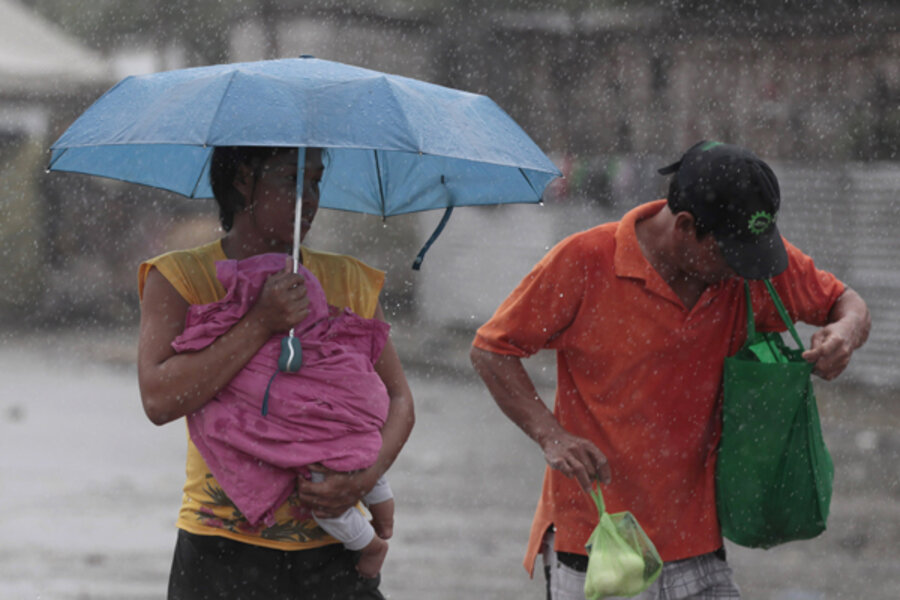Typhoon hits Philippines, with at least two dead and dozens missing
Loading...
| Manila
A powerful typhoon battered the northern Philippines on Monday, toppling power lines and dumping heavy rain across cities and food-growing plains. The storm left at least two people dead and 44 missing.
Typhoon Utor, described as the strongest globally this year, slammed ashore in mountainous eastern Aurora province with sustained winds of 109 miles per hour and gusts of up to 130 mph.
Footage from ABS-CBN TV network showed a woman swept away by a raging river in neighboring Isabela province. The woman waved her hands for help as she struggled to hang on to debris while being buffeted by huge waves in the muddy waters. It was not known what happened to her.
"She has not been found, so she is missing," said Norma Talosig, a regional civil defense director. She said the woman lived alone in a low-lying area and had refused to be evacuated.
Talosig said that in northern Nueva Vizcaya province, a 53-year-old farmer drowned while trying to rescue his water buffalo from a swift-moving flood. The animal survived.
In mountainous Benguet province, a 22-year-old man died on the way to a hospital after he was pulled from a landslide that hit a canal he was clearing, said regional civil defense official Andrew Alex Uy.
The typhoon triggered waves of up to eight feet and left scores of fishermen missing.
In northern Pangasinan province, 25 fishermen on three boats failed to return home, said provincial police spokesman Senior Inspector Ryan Manongdo.
Eighteen other fishermen from the eastern provinces of Catanduanes and Camarines Norte also were unaccounted for. Authorities were hoping they took shelter in coves and nearby islands, said Office of Civil Defense regional director Bernardo Alejandro IV.
"I hope they're just waiting for the typhoon to pass and will show up as soon as the weather clears," he said. A higher number of missing had been reported earlier, but some of the fishermen have returned home.
As of late Monday, Utor picked up speed as it continued to move away from the country. Government forecaster Joey Figuracion said the typhoon was 140 miles northwest of northern Ilocos Sur province's coast, and moving to the northwest.
It was forecast to reach southern China on Wednesday.
Office of Civil Defense Administrator Eduardo del Rosario said 1,895 people from three regions had to be evacuated to shelters, with 673 houses damaged.
Utor, the Marshellese word for a squall line, was the 12th of about 20 storms and typhoons expected to lash the Philippines this year.







